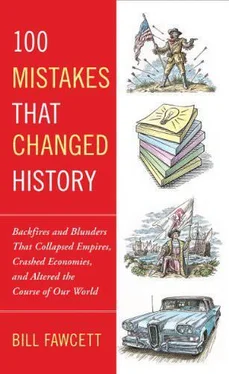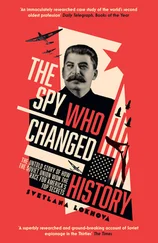Though Nixon never admitted to being involved in Watergate or its coverup, he did declare that he regretted not handling the scandal correctly. After being informed that there were enough votes in Congress to impeach him, he resigned on August 8, 1974. His successor was Vice President Gerald Ford, who a month later fully pardoned Nixon to protect him from criminal prosecution. Such an action drew accusations that a deal had been made between Ford and Nixon in which the latter would be pardoned for handing over the mantle of the presidency, though no evidence of such a deal has ever surfaced. Many attribute Ford’s defeat in the election of 1976 to the Watergate incident.
The political landscape in the decades following Watergate had been irrevocably altered by the political consequences of Nixon’s actions. Initially, the Democrats gained substantial ground in congressional elections as a result of the subterfuge of a Republican organization devoted to getting Republicans elected. The practice of recording conversations in the White House ended. Many new laws came into existence with the ostensible purpose of encouraging ethics in government.
Our language now shows just how deeply Nixon’s Watergate mistake affected the nation. Any public scandal is defined with the “-gate” suffix. These are across-the-board issues ranging from sports to pop culture: Spygate (a football controversy involving the New England Patriots spying on the New York Jets); Monica-gate (Monica Lewinsky’s ill-fated relationship with President Bill Clinton); and, more recently, Kanye-Gate (singer Kanye West publicly humiliating another singer during a televised awards ceremony).
Nixon oversaw many positive political developments during his tenure. He had significant foreign policy successes, such as his historic visit to China in 1972, which opened up diplomatic relations with them. He also initiated the Anti-Ballistic Missile Treaty with the Soviet Union, and he signed a cease-fire with North Korea, effectively ending American involvement in the Vietnam War. He made significant advances on the domestic front, implementing many of the most progressive social reforms of the 1960s. During his presidency, the Environmental Protection Agency (EPA) was created, and Nixon signed the Clean Air Act and supported extensive conservation measures and environmental reforms. He was also the first president to take up the issue of welfare reform. He signed important legislation prohibiting gender discrimination and implemented the first significant Affirmative Action program. Perhaps most notable, he was pivotal in desegregating Southern public schools.
When the Watergate was broken into, Richard Nixon was up almost twenty points in the polls. He had a lead that was beyond insurmountable and won easily. Watergate was just not necessary on any level. This one mistake meant that his other achievements have been completely overshadowed by scandal. Perhaps the most negative consequence of Watergate was the rise in public cynicism toward politicians. So many investigations went on after Watergate—often initiated primarily to destroy political opponents—that the public became jaded. In the decades since Watergate, public apathy for important political issues has risen. Politicians and their political agendas are often looked at with deep skepticism. This mistake changed how we view our leaders. The fallout has reverberated across the decades, ushering in a new era of public cynicism, apathy, and partisanship that continues to this day.
Marketing Madness?
1985
In 1985, Coca-Cola created what many consider to be one of the biggest marketing fiascos in history by replacing the old Coca-Cola formula with a new version of Coke to compete with a sweeter-tasting Pepsi. Public outrage was so great that Coca-Cola was forced to reintroduce the old version just seventy-nine days later. Six months after New Coke was launched, Coke was back on top, with sales increasing at more than twice the rate of Pepsi’s. So was it really a colossal marketing failure or a stroke of marketing genius?
Right after World War II, Coca-Cola enjoyed a 52 percent share of the cola market. But in the fifteen years before the introduction of New Coke, sales were slipping, while Pepsi’s continued to grow. By the early 1980s, Coke’s market share had dwindled to 24 percent, primarily because Pepsi was beginning to outsell Coke in supermarkets and other venues. In the 1960s, Pepsi had successfully targeted the youth market, which seemed to prefer its sweeter taste. Executives at Coca-Cola were convinced they had to take drastic action to stay ahead of the competition. So in 1983, Coca-Cola launched Project Kansas (named after a famous photo of a Kansas journalist sipping a Coke) to come up with a sweeter, better-tasting formula. They began conducting top-secret research and taste tests.
Why would Coca-Cola tinker with the legendary secret formula that had been so successful for almost 100 years? It primarily came down to the perception that Pepsi tasted better than Coke. Taste tests conducted by both cola rivals showed that most people preferred the taste of Pepsi. And later taste-test results went even further to validate the idea that Coca-Cola should reformulate its flagship beverage. Not only did consumers express a preference for Pepsi over Coke in those taste tests, but they also preferred the New Coke formula (dubbed Kansas) over both old Coke and Pepsi.
However, three serious research and marketing problems emerged, which were not fully understood by the company until after New Coke was launched. The first problem had to do with the taste tests themselves. The tests used small samples the participants were supposed to sip. While many people preferred the sweeter taste of Pepsi in small amounts, they didn’t care for the soda in larger amounts, like those found in a typical can. In fact Coke is often preferred in larger volumes because it is less sweet.
The second problem is what is called “sensation transference.” First coined in the late 1940s, the phrase is used to describe the phenomenon of tasters unconsciously responding to the drink’s packaging, and that product packaging can change the perceived taste. In the case of Coke, people responded to the red color of the can with its distinctive script when tasting the beverage. Many marketing experts think it may be impossible to separate the taste of the product from its brand name and distinctive package.
The third problem was that the company underestimated the sentimental value attached to the original Coca-Cola, which many people considered an integral part of American culture and tradition. When the initial taste-test results came back favorable toward New Coke, the executives decided to conduct surveys and focus groups to help decide if they should get rid of old Coke altogether or keep both old and new formulas. However, because of the intense secrecy surrounding the prelaunch marketing research, they never asked a key question: Do you want us to replace the old Coke with a new version of Coke? Instead, they asked people if they would purchase and drink Kansas if it were called Coke instead. Only a small percentage of people completing the survey said they would not purchase the Kansas drink if it were renamed Coke. However, the executives chose to ignore 11 percent of those in focus groups who stated that they would stop drinking Coke altogether if the Kansas choice was called Coke. And this segment of the focus group population was an exceedingly vocal and angry minority, ultimately influencing others in those Kansas test groups indirectly and causing the negatives to jump way up.
The executives ultimately decided that keeping both the old and new Cokes would divide their own share of the soda market and the result would be that Coke would no longer be the number-one-selling cola in the United States. Pepsi could then claim not only that more people prefer the taste of Pepsi over Coke but that more people drink Pepsi than Coke. The last thing the company wanted was to wage a cola war between two competing versions of Coke. Fearing a marketing nightmare, Coca-Cola replaced old Coke with New Coke, instead of introducing New Coke as another soda option.
Читать дальше












